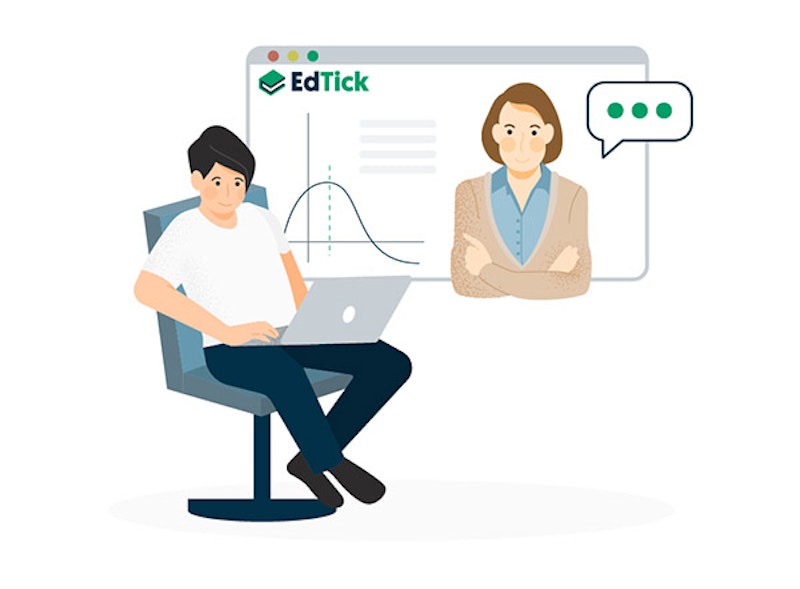1:1 (One-To-One) Technology: How To Successfully Implement It In The Classroom
Online technological devices and Bring Your Own Device (BYOD) practices are rapidly changing the way education is delivered. Today, more and more educational institutions are shifting towards a more interactive learning environment by implementing 1:1 (One-To-One) technology.
However, the shift towards a 1:1 classroom can be an overwhelming project for many institutions, and executing a smooth and efficient transition can be a challenging task.
We at EdTick want to provide guidance for educational institutions looking to invest in 1:1 technology and avoid the common issues it can present. To that end, this article will detail some tips for getting students and teachers ready for the use of 1:1 technology.
What are the benefits of 1:1 technology?
There are numerous benefits your institution and students can get out of the implementation of 1:1 technology. These are some of them:
- Students these days tend to be more motivated and engaged when technology is involved.
- It is easier for teachers to offer relevant content that helps students understand concepts better using different presentation styles such as visuals, animations, or videos.
- Teachers are able to offer more personalized feedback and resources to each student through the sharing of links and other content.
- Students who are too nervous to ask questions in front of the whole class can ask questions through a messaging app.
- Teachers can ensure that students are engaged and participating by running polls during lessons, which increases students’ information retention.
- Teachers can promote collaboration among students by providing collaborative tools such as Google Classroom or through the use of an LMS or VLE platform.
- Students can increase their proficiency with technology, which will be highly valuable in their career.

Phase 1: Envision Your Institution’s 1:1 Program
Before implementing any new technology, you should build a good foundation of knowledge to make sure you make the best decisions while adopting the technology. We suggest you to follow these steps:
Choose the right technology
There is a wide range of devices you can use in your classroom, including laptops, Chromebooks, tablets, voice recorders, and digital microscopes. You should consider several different factors when choosing which technology is right for your classroom, including the age of your students, the subjects you teach and how you are likely to use the technology. Your comfort level with different devices is also an important factor when it comes to choosing the right tools. We suggest you spend some time experimenting and familiarizing yourself with the devices you’re interested in.
Establish new rules and routines
As this may be the first time students are using technology for educational purposes, it is crucial to establish rules and routines for the new tech. Consider the age of your students when developing these rules. Rules you should include regardless should be staying focused during assignments and only visiting relevant sites.
Understand acceptable use policies
While visualizing your school or university’s 1:1 program, you should seek guidance on acceptable use policies in order to protect your students and offer them the best experience when they access your institution’s system. There are many organisations that can help you solve your network challenges.
Create a support systems chart
To assist your 1:1 program you should also consider a support systems chart to ensure clearly defined responsibilities when tech issues appear, and for instructional planning decisions at your institution.

Phase 2: Ensure Good Communication With Key Players In The 1:1 Program
Once the major decisions regarding the 1:1 program are made, you should ensure that the program’s mechanisms are communicated effectively to the most important and relevant figures at your institution. At EdTick we suggest you to follow these steps:
Ensure students and teachers are familiar with the new technology
Spend some time ensuring your students and teachers are familiar with the technology you will be implementing, and give them a chance to learn how to use it. If there are certain programs or applications that they will be using frequently, set aside some time to have students download them and use demos or other training tools. The younger your students are, the more support and time investment they will need in the beginning.
Provide family members with relevant guides
It is likely that students’ families will also have questions about the 1:1 program. Therefore, we suggest you assist curious parents and family members involved by offering them a customized Q&A for the 1:1 program rollout.

Phase 3: Implement The 1:1 Program Expertly
The next step is working on the action plan. In this phase you should focus on ensuring that students use their devices in enriching and responsible ways.
Plan activities ahead and share calendars
It will be beneficial for both teachers and students to have a monthly lesson calendar that allows them to understand the topics, objectives, and activities involved with each subject.
Educate students in care and maintenance
You should share guidelines on how to best take care of the devices your students are using. In order to make this training engaging, we suggest you create posters and other visuals, especially if you have younger students.
Consider switching to a flipped classroom
In the traditional classroom models students spend much of their time listening to the teacher, in a flipped classroom students learn the basic concepts on their own and use class time expanding their knowledge and applying what they have learned to tasks, projects, or simulations. Students can thus use the classroom to participate in research, to conduct experiments, to work in group presentations, and to deepen their knowledge in the concepts they learned outside the classroom. The flipped classroom can easily be implemented while using a 1:1 program.
Conclusion
As the world of technology is constantly and rapidly evolving, at EdTick we encourage you to implement 1:1 technology now to prepare your students for success in the classroom and beyond. You will be impressed with how much you can transform your institution and your students´ education through the implementation of technology in the classroom.
Our EdTick platform helps your educational institution to connect with the educational technology you are looking for. We also offer a wide range of guidelines that will help you choose and implement the right tools, such as Learning Management Systems, Virtual Learning Environments, Online Examinations, Learning Resources Softwares or Career Development Software...